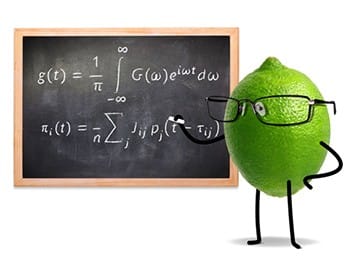
“The future depends on the combination of humanities and mathematics.” That’s what Janne Brok, director of Sioux Lime, says. The company uses mathematics as a technology for optimizing processes. A broad field where different sectors come together. “Innovations start at the intersections between sectors, but especially when it comes to the cooperation between alpha’s and beta’s.”
Sioux Lime, a subsidiary of the service provider Sioux, focuses exclusively on mathematics as a technology. They support companies in various sectors, from logistics to artificial intelligence. According to Janne Brok, the market for the so-called Mathware is continuing to grow every day. “For example, a customer wants to boost the speed of their machine. Then it is possible to rotate the dial so that the machine runs faster, but at some point some components will break down. We are able to use mathematical formulas in order to find out precisely where things go wrong and rectify any problems.”
Mathware is also able to contribute on the basis of emerging technologies such as artificial intelligence en machine learning. “For instance, we have developed an application that allows asbestos particles in samples to be detected more quickly,” Brok explains. “Now, highly educated people are sitting in laboratories all day long looking at images in order to detect asbestos. Machine learning can help with the initial selection. This way, photos can be disregarded that definitely do not show asbestos. That saves a lot of time. It helps to make the process more reliable, cheaper and faster.”
Man and machine
Various tasks can be taken over by machines. “It is technically possible to automate simple processes,” says Brok. She also believes that human behaviour and language can be read increasingly better by a machine. She cites a Sioux Lime customer as an example. “They produce educational materials for tablets for primary schools”, she says. Pupils carry out assignments on a tablet. Data is collected for this purpose, such as how many questions are wrong and how quickly a student answers them. “This is analyzed by an algorithm that is able to determine how difficult a certain task is, how fast someone learns and where they stand in terms of learning objectives. Based on this, the system decides which exercises are most suitable for a particular student. These should be relevant, not too difficult but not too easy either.” The ultimate goal is to improve and accelerate the learning process.
Application of this technology can also go a step further. ” Using the enormous amount of data, we are also able to understand behaviour better and easier”, Brok states. Energy transition is a subject where this can be applied. “For example, you could bring together different types of data in order to accelerate the energy transition. Consider information about technical developments, but also about human behaviour. This technical data has the potential to demonstrate how and why we need to switch to sustainable energy. The human side is important here as well,” she says.
In theory, certain technical or sustainable solutions can work, but in many cases people often have to buy them or use them. For instance when it comes to solar panels. Some people don’t like them or have trees in the garden that block out sunlight. They will not buy solar panels. Yet these types of cases are not included in theoretical models. “In order to map the human side as well, you also need knowledge about the human brain.”
Service Provider
Sioux Lime started out as one of the departments at the Faculty of Mathematics at Eindhoven University of Technology (TU/e). “There is a lot of academic knowledge available on how to improve processes. However, this is still relatively little used. As a result, there are many opportunities for making products and processes cheaper, faster or better,” Brok says. “Sioux Lime was founded as a service provider in that specific area.” It fits in seamlessly with the services of Sioux, its parent company. These mainly concentrate on software, mechatronics and electronics. “At Lime, the focus is entirely on mathematics as a technology. It can be used across all markets,” she explains.
Great teamwork
This diversity also changes the way that we work as a team. “We often work on projects in small groups of four to five employees,” Brok explains. Working together in such a small group is especially important. “We have to value each other for our diversity. That all sounds rather enjoyable, but it’s often still very difficult. Everyone is different and has different areas of expertise. That sometimes clashes,” she admits. “The goal of the project is what’s most crucial, and that’s where everyone has to commit themselves one hundred percent.” Brok not only sees challenges within the team, but collaborations outside the team are also difficult at times. “It’s a real challenge to just make a start. Being open to cooperation and the input of others. See how something works. Making mistakes in the beginning is not a problem. In the end, this will produce a new and unique result.”

